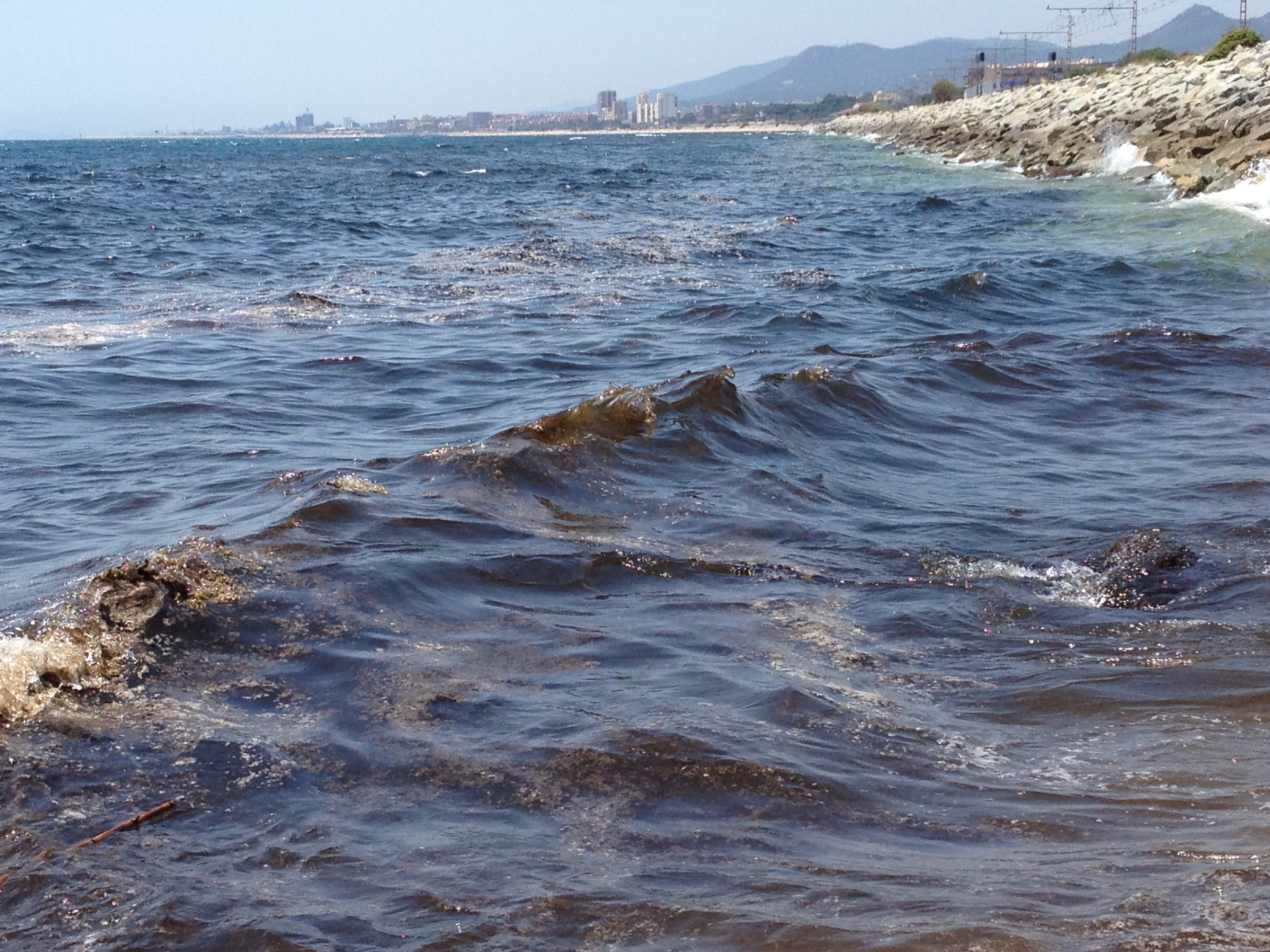The intense growth of microscopic algae that are part of the marine plankton leads to changes in the colour of the water.
Water is transparent and colourless. However, when we look at the sea, we see it blue, which has to do with the physical properties of light and its interaction with water molecules. When sunlight penetrates into the water, it is absorbed selectively. Thus, colours corresponding to longer wavelengths, such as red, orange or yellow, are absorbed much more than those of shorter wavelengths, especially blue. This unabsorbed blue radiation is reflected by the surface, and this is why we see the sea as blue.
However, sometimes the sea is no longer blue and takes on a greenish, brownish or reddish hue. This may be due to the presence of suspended particles, but also to the intense growth of certain microscopic algae that are part of the marine plankton. These algae have different photosynthetic pigments that absorb different wavelengths of light and will also determine the colour of the water.
In general, phytoplankton blooms keep the marine ecosystem healthy and determine its richness, reflected, for example, in fish production and the presence of cetaceans in the Mediterranean. In the open ocean, microalgal growth occurs between late winter and early spring, when the shallower, nutrient-rich water layers that have risen from deeper areas during winter mixing coincide with the increase in light and temperature that occurs at this time of the year.
However, some species of microalgae produce toxins that can affect human health or other marine organisms. In these cases, we speak of harmful algal blooms (HABs), a broad term that indicates that humans perceive the blooms as causing problems for people or the environment.
The problem lies in the fact that these microalgae can be ingested, among others, by filter-feeding mollusc species (mussels, clams or razor clams), and this can lead to food poisoning in humans who consume them. In addition, there are proliferations which, although not toxic, reach very high concentrations of cells which, when they die, are decomposed by the bacterial community with a high consumption of oxygen in the water and harms other organisms in the ecosystem, even causing their death by lack of oxygen.
The Mediterranean, a special case
The presence of harmful algal blooms is particularly relevant in semi-enclosed and densely populated coastal areas where nutrient inputs from the mainland are important throughout the year, but especially in summer, when some coastal populations increase tenfold or even a hundredfold.
High concentrations of nutrients on the coast, together with high temperatures, contribute to the intense growth of certain microalgae, often dinoflagellates. In the Mediterranean, these proliferations tend to occur in semi-confined waters such as bays and ports, of which in Catalonia we find one every 8-10 kilometres of coastline. This means that dinoflagellates, which include species of the genera Alexandrium and Dinophysis, some of which produce paralysing and diarrhoeic toxins, respectively, are very comfortable in our waters.
Another genus that includes toxic species is Ostreopsis, which is of tropical origin but has been blooming on Mediterranean beaches for more than 20 years. Research suggests that this phenomenon may coincide with rising water temperatures and high anthropogenic pressure on the coast of this basin. So far, Ostreopsis blooms have not led to documented cases of food poisoning in the Mediterranean, although they have been associated with mild respiratory irritation in people who have inhaled marine aerosols from the beaches where they proliferate.
Dinoflagellates, the protagonists of "red tides"
Globally, dinoflagellates are the group of microalgae with the most representatives of species that produce harmful or toxic blooms. Their proliferation is determined by high nutrient concentration and low water agitation, as represented in the well-known mandala of Professor Ramon Margalef. In this conceptual model, Margalef refers to dinoflagellate blooms as "red tides", a classic and popular term referring to the dominant pigment of these microalgae that stains the sea reddish.
In order to control the different types of blooms, developed countries have established a series of monitoring programmes that regularly track toxic or harmful microalgae species. On the Catalan coast, for example, the Catalan Water Agency (ACA) and the Catalan government's Department of Climate Action, Food and Rural Agenda, in collaboration with research centres such as the Institut de Ciències del Mar (ICM-CSIC) and the Institute of Agrifood Research and Technology (IRTA) in Sant Carles de la Rapita, aim to guarantee both the safety of bathers and the food safety of the products that reach the fish market.
